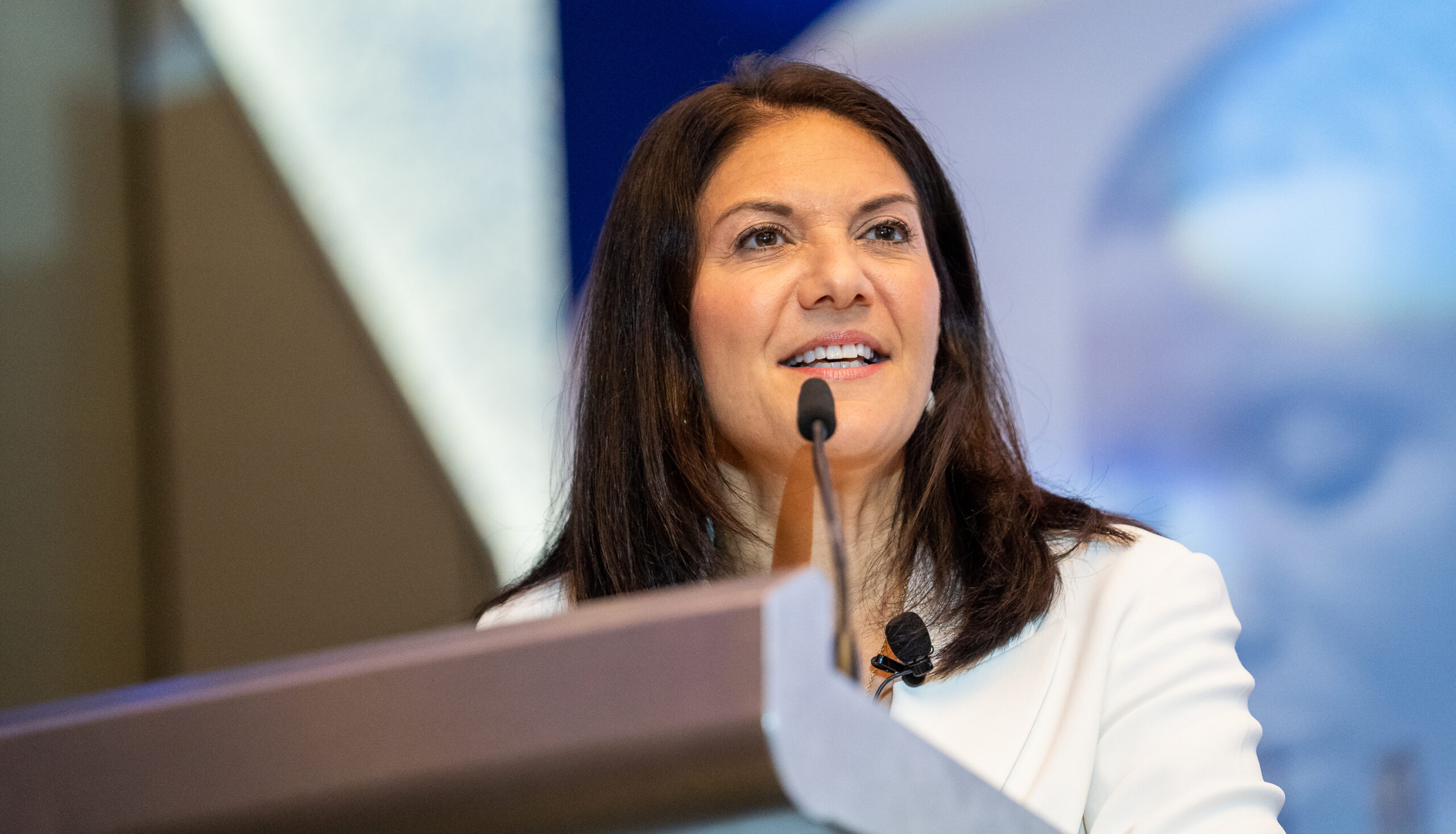IWF member Mary Ellen Iskenderian, President & CEO of Women’s World Banking, shares three key points for expanding women’s financial inclusion in response to the impact of the ongoing pandemic.

1. Digitize government benefits payments
Distributing Government-to-Person (G2P) payments via digital channels is a proven way to boost financial inclusion and empower women economically. Research shows that payments made directly to women strengthen their household decision-making power and bolster their labor force participation. For example, according to the 2017 Global Findex, 80 million women opened their first bank account in order to collect government social benefits. Last year, India made the bold decision to make digital COVID relief payable only to women; as of June 2021, 25 million new accounts in India were opened primarily by women.
Given the urgency to provide cash assistance quickly in response to the devastating impact of COVID-19, governments must manage potential risks when utilizing digital payments, and minimize the risk of excluding women in the process. Providing women with a choice of payment service providers and ensuring they have appropriate digital and financial capabilities are two important steps toward enhancing the impact of payments as a valuable onramp to financial inclusion.
2. End the gender gap in mobile phone ownership
In the decade since digital financial services were launched, owning a mobile phone, ideally a smartphone with internet access, has become an indispensable first step toward financial inclusion. But the gap between men’s and women’s smartphone ownership in low- and middle-income countries exacerbates women’s exclusion from the financial system.
Encouragingly, the gender gap in mobile internet use is decreasing—from 20% last year to 15% this year. This reduction in inequality is almost exclusively due to women’s increased adoption of mobile internet in South Asia. GSMA attributes this increase to the pandemic, suggesting that online education and women’s entrepreneurship needs outweighed previous restrictive social norms.
Governments can take action to end the mobile phone gender gap by building the infrastructure needed to support mobile connectivity, facilitating competition and consumer choice and by leveraging relevant Universal Service Funds to increase women’s access to broadband internet. Mobile network operators (MNOs) can also increase handset availability in non-urban markets, increase asset financing (installment payment plans) options for handsets, and facilitate the creation of “bundled” handset/data/talk/text options.
3. Design appropriate and affordable financial products for women
As Oliver Wyman’s Women in Financial Services notes, “Women are the single largest underserved group of customers in financial services.” But, far too often, when financial service providers seek to address this imbalance, “approaches that may appear to be gender-neutral in fact default toward men’s needs and preferences.” Financial service providers can both address financial inequality and increase their customer base by designing and marketing financial products specifically for women.
For example, built-in savings mechanisms and financial education resources create long-term benefits for women, their families and communities. Additionally, products that are developed for those on low, irregular incomes with high-frequency, low-denomination transactions are especially relevant to women
As the effect of the pandemic has increased caregiving responsibilities for many women around the world, product flexibility is particularly important. For example, the flexible nature of e-commerce platforms can not only help women access economic opportunities and support, but to do so on their own terms.
As the COVID-19 pandemic continues to evolve and disproportionately impact women globally, it’s crucial to prioritize digital financial inclusion for women. Elevating digital finance, such as digitizing G2P payments, closing the gender gap in mobile phone ownership, and customizing financial products to the needs of women will require a concerted effort on the part of governments, businesses and the financial services industry. Read more about what each of us can do in Reaching Financial Equality for Women. Women’s World Banking is committed to empowering women; you can learn more about our work at www.womensworldbanking.org.
